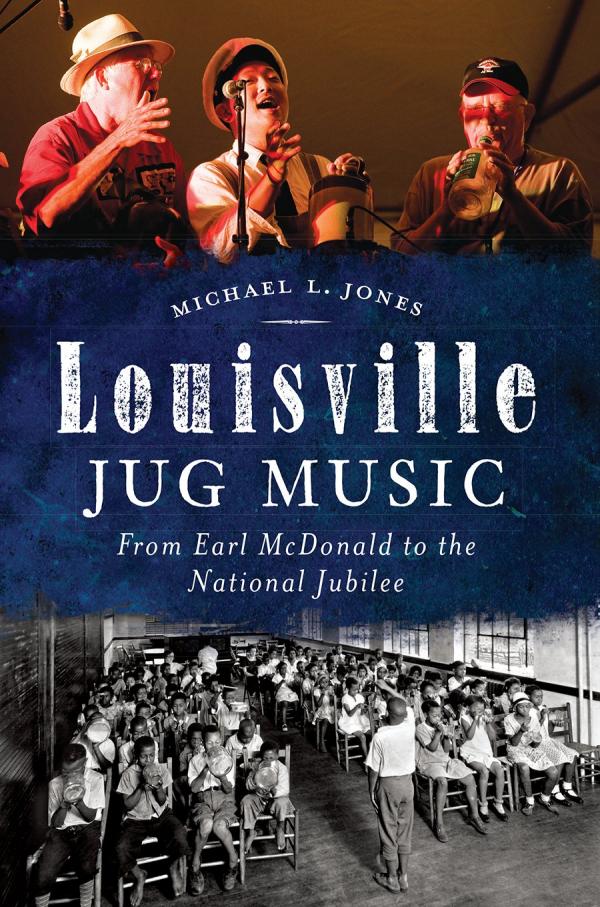Louisville journalist and author Michael L. Jones has established himself as something of a jug music expert with publications on the subject in LEO, Louisville Magazine and The Courier-Journal. Jones wrote his most recent book, “Louisville Jug Music: From Earl McDonald to National Jubilee,” as a way to celebrate Louisville as the heart of a musical tradition that dates back to turn-of-the-century America.
I interviewed Jones recently about the often misconstrued origins of jug music, its influence on current tunes, and how it continues to be an enduring part of our city’s music scene.
You mention in the book that “the main purpose of this book is to liberate jug music from misconceptions surrounding it.” What are some of those misconceptions?
In the 1920s, when the recording industry started, the record companies segregated white and black artists. Music by black artists was marketed as “race records” and music by white, rural artists was “hillbilly” music. But white, rural artists and black blues artists all drew on the same group of songs, which has come to be called the “common stock.” They are tunes likes “John Henry,” “Stagolee,” and “In the Jailhouse Now,” which was recorded by both country star Jimmie Rodgers and the Louisville Jug Band, among others. There were also more than 20 interracial recording sessions in the early days of country music, including a 1931 session between Rodgers and the Louisville Jug Band that occurred in Louisville. But when you see a discussion of jug music or country music in general, these black artists are totally ignored.
My point is the evolution of American music is not as cut and dry as people think. Much of what we think about its development is obscured by record company marketing plans. Even the Carter family had an African American collaborator.
You also say in the book that “jug music played a role in developing a lot of music people listen to today.” Do you have any examples of that correlation?
Gus Cannon had a jug tune called “Walk Right In” that was a hit in the 1960s for the Rooftop Singers. Jug music spawned a craze for skiffle music in 1950s England. The rock musicians that started out in skiffle bands include Jimmy Page, the Beatles and Van Morrison. On the American side, many of the bands popular in the folk revival of the 1960s got their start playing jug songs. John Sebastian of the Lovin’ Spoonful is currently a jug band musician, the Grateful Dead had a side group called Mother McCree’s Uptown Jug Champions, and Jim Kweskin’s Jug Band was a popular 1960s act that actually recorded Louisville jug music.
How did our view of jug music become disenfranchised from the original African American influencers?
Jug music went out of vogue with the general public after the Great Depression. This also coincided with the birth of the Civil Rights Movement. Basically, the jug music (and the banjo itself) was tied to Antebellum images in most people’s minds. African Americans wanted to move away from that image and that was reflected in the music they listened to. And, as I said before, the record companies were actually promoting that image of the good old days to white record buyers of country music.
During the folk revival, young white musicians could look back to an earlier America where a man had more freedom. That did not appeal to African American musicians, which is the reason that there were few African Americans involved in the scene although it was actually celebrating African American culture. Also, a lot of jug music songs were passed through the minstrel show or written during the “coon song” era, and that also did not appeal to a black audience.
Louisville, especially at the turn of the century, was home to a diverse population. How did that affect jug music?
After the Civil War there was an influx of ex-Confederates in Louisville. They brought along with them some of the Southern prejudices. Before 1900s, African Americans lived all over the city, but at the beginning of the 20th century we began to see all-black neighborhoods like West Parkland, modern Park DuValle, which was called “Little Africa.” This also impacted music.
Before the Civil War there were many interracial bands in the city. But after the war, most bands were either all white or all black. This forced professional African American musicians to form groups with African American folk musicians. It is the combination of the two that gave birth to Louisville jug music, which is different from other regional styles of jug music because of its use of jazz instrumentation. The other big jug band, the Memphis Jug Band, was more of a tradition string band because, being close to Mississippi, those musicians were greatly influenced by Delta Blues. Louisville musicians were more influenced by Dixieland Jazz because of the constant river traffic between Louisville and New Orleans. So, you see saxophones and other brass instruments along with the regular members of a string band.
Are there any notable modern jug musicians?
The Juggernaut Jug Band (based in Louisville) is the only local, regularly gigging jug band. The Carolina Chocolate Drops, a contemporary African American string band, is very popular. Dom Flemons, one of the founders of the Chocolate Drops, is solo. He has a new album called Prospect Hill that is getting good buzz. My personal favorite contemporary band is the Crow Quill Night Owls from Portland, Ore. They have played the National Jug Band Jubilee twice. There is something of a second folk revival going on right now led by bands like Mumford and Sons. There are actually big street music scenes in Portland, Asheville, N.C., and New Orleans.


